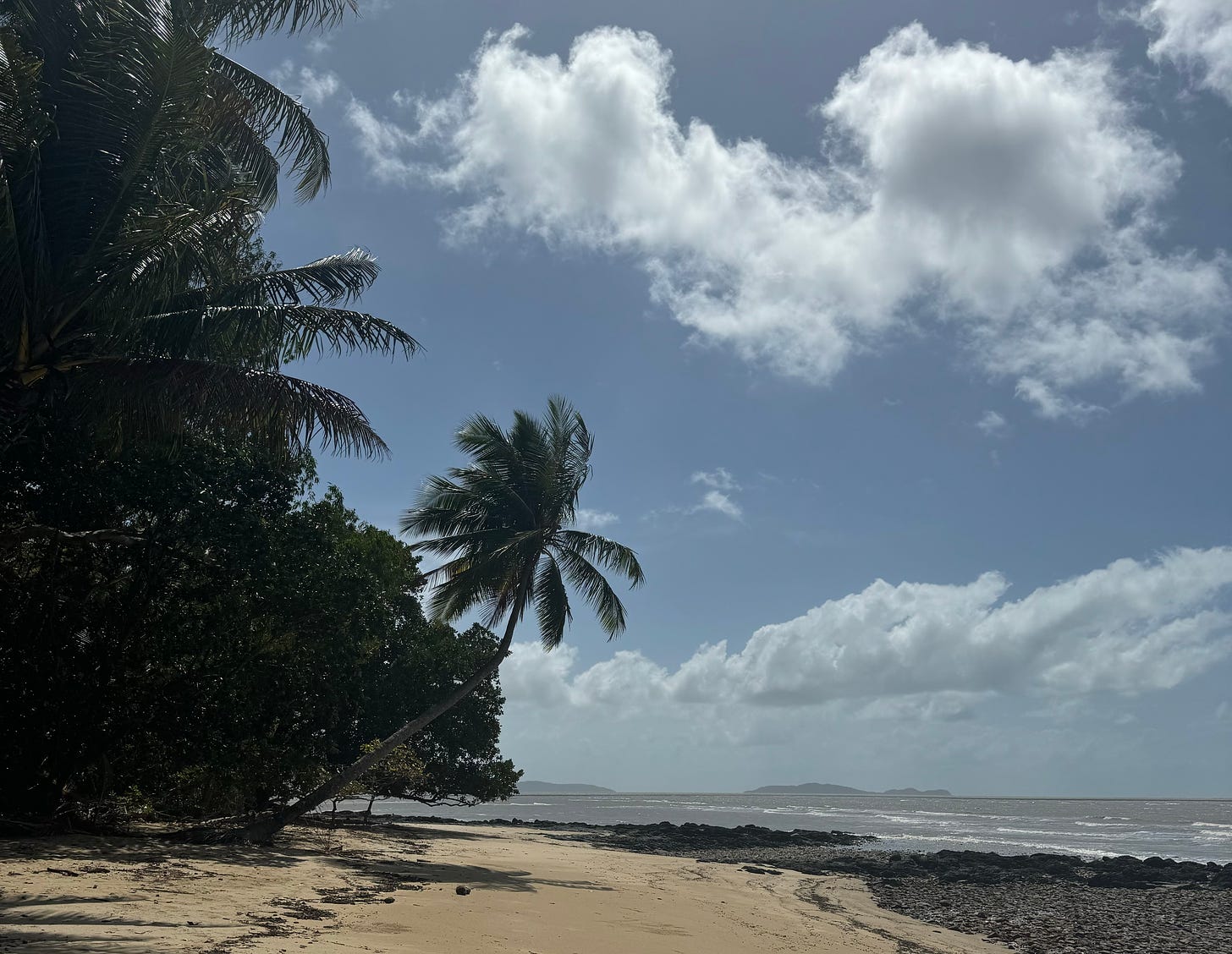1: The rainforest and the reef
In the corner of my room is a half-unpacked suitcase. When I got home after midnight from a week and a half travelling around Queensland, I managed to pull out what needs washing and make a pile of things to hang, before I collapsed in bed.
The golden rule of caring for clothes – especially after being in humid climates – is to wash them as quickly as possible (always gently) or to air them out. But today I haven’t managed to get out of my pyjamas, let alone put on a load of laundry.
The trip was to explore the symbiotic relationship between the Daintree and the Great Barrier Reef. I wrote about threats to Australia’s marine life for Elle Australia this month and as a result, was invited to far north Queensland to experience the only place where two World Heritage sites meet.
At 130 - 180 million years old, most scientists believe the Daintree is the world’s oldest living rainforest. It contains one of the most complete records of plant life on earth including 13 of the 19 primitive flowering plant families. When I learnt this fact, my non-scientific brain, immediately reduced it to: flowers originated in the Daintree. An incredible claim – if that is in fact how the evolution of flowers works. Once I’ve spoken to a few more scientists I will come back to you with an answer on this but in the meantime here is a fascinating story from the New York Times on the evolution of flowers, it seems Charles Darwin called them “an abominable mystery.”
The Daintree is part of the Wet Tropics of North Queensland Heritage Area, that attained World Heritage listing in 1988. Walking into the rainforest reminded me why I love Australia’s forests so much. It’s not just the sheer size and height of the trees or the density of the bush – it’s the intensity of the sensory experience. The pale dappled light that filters through the trees, the smell of wattle and leaves turning into mulch on the forest floor and the silence, bird calls and rustling sounds of the deep bush.
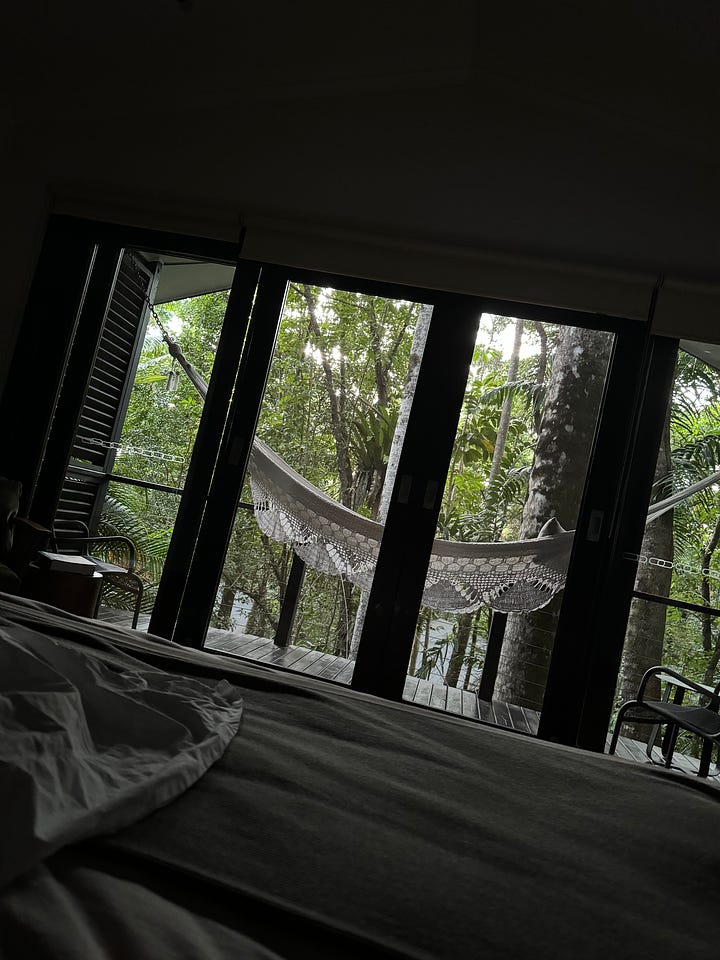
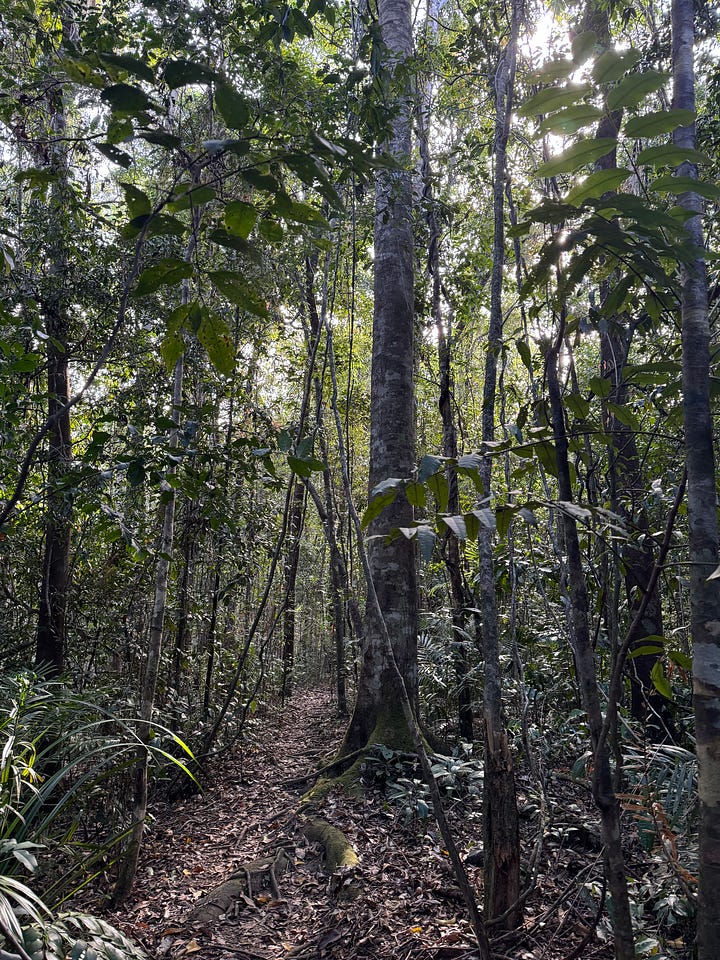
I was staying at Silky Oaks Lodge in a tiny, beautiful wooden house immersed in the rainforest on the edge of the heritage listed area. My favourite thing about the room was the windows on every wall that surrounded the bed and looked straight out onto the trees and ferns. Every night before I fell asleep I’d open the blinds and make sure the heavy fly screens were shut so I could listen to the sounds of the rainforest as I drifted off and in the morning as I woke up. My second favourite things were the black, stone outdoor bathtub and this beautiful bright yellow soap.
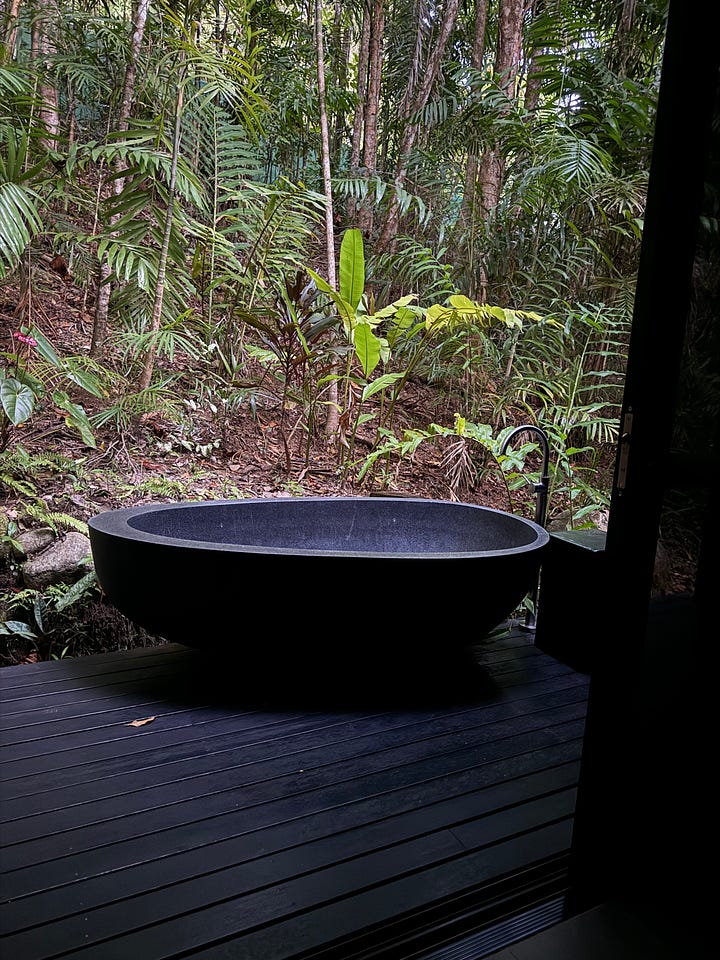
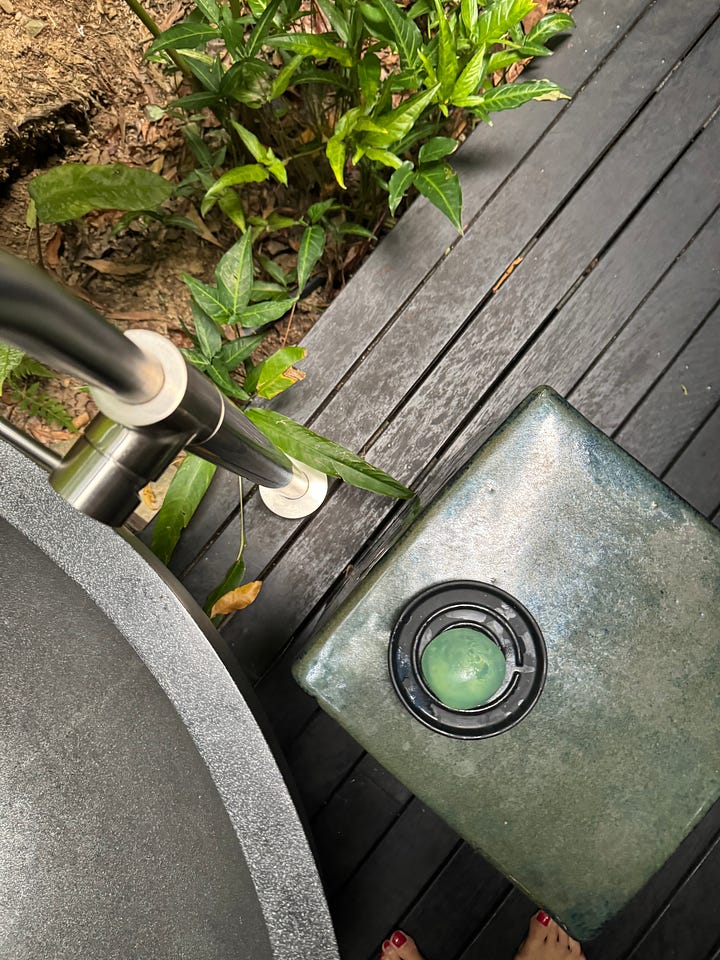
The Mossman Gorge runs along the edge of the hotel property. Snaking passed the the restaurant and the bar. When I swam in it I was struck by how clear the water was and the way it ran over and around the large granite boulders piled in its centre. I made my way out into the middle of the Gorge to watch it run downstream, its flow was mesmerising. Somehow, despite rippling, it was as flat as glass. Its strong undertow reminded me of this line by the writer Emery Allen:
I will lead you to the river so you can remember how beautiful it feels to be moved by something that is out of your control.
During the time I spent in the forest and out on the reef, meeting with biologists, park rangers and guides, it became clear that no one is certain about the extent of the relationship between these two very special ecosystems. When I asked what will happen to the rainforest if the reef dies – as scientists are predicting could happen in the next decade because of global warming – no one could answer me. Which means, for the story I want to write, I have work to do.
The indigenous name for the Daintree is Julaymba, and the area belongs to the Kuku Yalanji People who have lived amongst its trees, swum in its gorges and walked its beaches for 50,000 years. My instinct is that knowledge of the relationship will be deeply embedded in their stories and understanding of the land, and that as usual – when it comes to natural systems - western science is scrambling to catch up.
What I packed
Dressing well in humid places is famously difficult. Especially when you’re getting on and off boats and walking along trails. This was a tricky trip to plan for too, over the course of a week and a half I had lunches and dinners to attend alongside days in the rainforest and swimming on the reef.
Since I’m sharing a list of products below, I feel the need to stress that we have to reduce our consumption of clothes if fashion has any hope of meeting a 1.5 degree emissions target. Some researchers say this means people in wealthy countries can only buy 5 new garments a year.
I believe that everyone of the designers I’ve included below are doing their best to make high quality garments from low impact materials that last a long time. They also have a close relationship with their manufactures and each of these styles is something I have on high rotation. So I have included links to the items that are still available to be purchased BUT I did not buy any of them this year - some of them I’ve had for five years or more. Please think carefully before you buy anything new and before you do see if you can source it secondhand.
Black mini skirt by Ganni (organic cotton but the lining is recycled polyester which kills me)
Black Mother of Pearl Tencel/ organic cotton vest
Black knee length vintage shorts made from wool suit fabric
Green Edward Cuming recycled rayon shirt
Navy and White Tekla organic cotton striped shirt (they don’t have the navy anymore but this is close)
Long sleeve merch t-shirt (from my friend Mereki’s first album: Death of a Cloud)
White Cloth and Co organic cotton t-shirt
Black Cristaseya cotton kaftan
White Ilio Nema cotton kaftan (it’s not exactly the same as mine but it’s close)
Shoes: Teva sandals, Jil Sander ballet flats
Plus: workout gear, two swimsuits, underwear, socks
Plane outfit: Black Hayden Shapes merino wool t-shirt, Black Lee Matthews cotton pants with elastic waist, Black blazer by Ganni, sneakers




